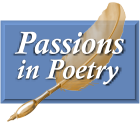Author's Introduction
by Lewis Carroll
English novelist and poet. Famous for his children's stories, especially Alice's Adventures in Wonderland (1865), Through the Looking-Glass and What Alice Found There (1871). His children's poems include Phantasmagoria (published with other poems in 1869), The Hunting of the Snark (1876) and Sylvie and Bruno (1889). He also published various mathematical treatises of which the most notable is his light-hearted defence of Euclid, Euclid and his Modern Rivals. His stories and poems have been seen as revolutionising children's literature,
breaking with and even parodying the moral tales which had previously dominated.
Four Riddles
|
|
These consist of two Double Acrostics and two Charades. No. I. was written at the request of some young friends, who had gone to a ball at an Oxford Commemoration - and also as a specimen of what might be done by making the Double Acrostic A CONNECTED POEM instead of what it has hitherto been, a string of disjointed stanzas, on every conceivable subject, and about as interesting to read straight through as a page of a Cyclopaedia. The first two stanzas describe the two main words, and each subsequent stanza one of the cross "lights." No. II. was written after seeing Miss Ellen Terry perform in the play of "Hamlet." In this case the first stanza describes the two main words. No. III. was written after seeing Miss Marion Terry perform in Mr. Gilbert's play of "Pygmalion and Galatea." The three stanzas respectively describe "My First," "My Second," and "My Whole."] |
